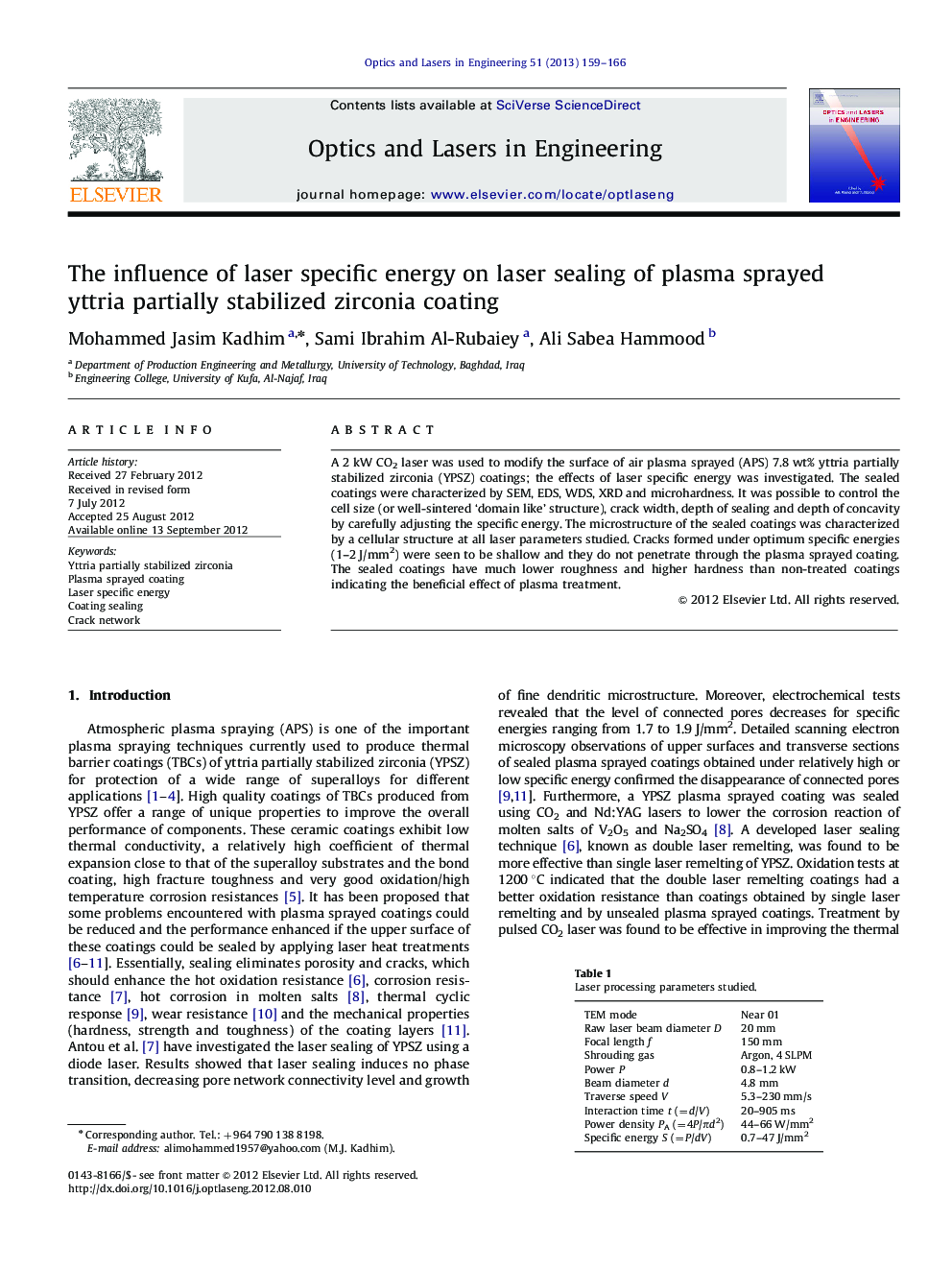| کد مقاله | کد نشریه | سال انتشار | مقاله انگلیسی | نسخه تمام متن |
|---|---|---|---|---|
| 734891 | 893546 | 2013 | 8 صفحه PDF | دانلود رایگان |

A 2 kW CO2 laser was used to modify the surface of air plasma sprayed (APS) 7.8 wt% yttria partially stabilized zirconia (YPSZ) coatings; the effects of laser specific energy was investigated. The sealed coatings were characterized by SEM, EDS, WDS, XRD and microhardness. It was possible to control the cell size (or well-sintered ‘domain like’ structure), crack width, depth of sealing and depth of concavity by carefully adjusting the specific energy. The microstructure of the sealed coatings was characterized by a cellular structure at all laser parameters studied. Cracks formed under optimum specific energies (1–2 J/mm²) were seen to be shallow and they do not penetrate through the plasma sprayed coating. The sealed coatings have much lower roughness and higher hardness than non-treated coatings indicating the beneficial effect of plasma treatment.
► Successful desired depth of sealing, shallow crack and cell size were obtained by carefully adjusting the laser specific energy.
► Surface hardness of laser sealed coating is more than two times higher than that of plasma sprayed coating.
► Low specific energy is needed for producing coating components with lower roughness.
► Investigated process is feasible for improving the performance of thermal barrier coating.
Journal: Optics and Lasers in Engineering - Volume 51, Issue 2, February 2013, Pages 159–166